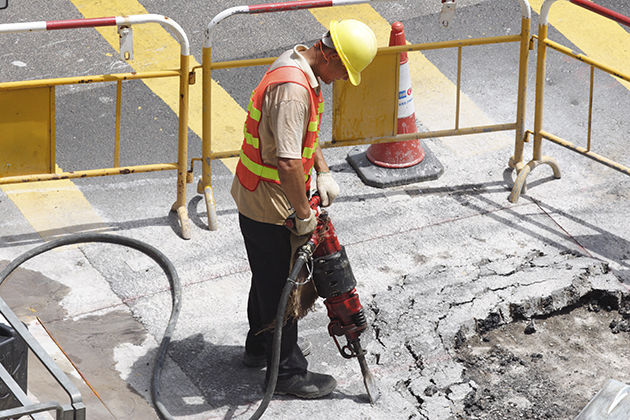As we mark the annual Labor Day holiday, Connecticut workers continue to suffer occupational illness rates higher than the national average. A recent study by UConn Health found that 7,129 unique cases of occupational illnesses in the state were reported to either the Workers’ Compensation Commission or the Department of Public Health in 2012.
The overall rate of occupational illness was 21.9 illnesses per 10,000 workers, improving Connecticut’s standing among the states from the previous year, but still 8 percent higher than the national average, based on the standardized survey compiled by the Connecticut Labor Department and the U.S. Bureau of Labor Statistics.
The report, “Occupational Disease in Connecticut, 2014,” was prepared for the Connecticut Workers’ Compensation Commission by occupational and environmental health expert Tim Morse of UConn Health.
“It is encouraging that occupational illnesses declined in 2012,” Morse says, “though we are still seeing thousands of cases of these often serious conditions every year, with many cases not even being reported.”

Connecticut continues to be higher than the national average for occupational disease, a pattern that has persisted for a number of years.
“It is difficult to pinpoint the reasons why Connecticut remains above the national average,” says Morse. “It could be simply that we are more diligent in diagnosing and/or reporting cases here, although the Bureau of Labor Statistics methods are the same for all states. Other possible reasons include a higher concentration of hazardous industries, higher productivity, or longer work hours, which may increase risk. However, we don’t have clear data to determine which, if any, of these might be contributing.”
John Mastropietro, chairman of the Connecticut Workers’ Compensation Commission, stresses the importance of prevention.
“The Connecticut Workers’ Compensation Commission wants to help in preventing occupational injuries and illnesses, and hopes that employers and employees utilize the information in this report to help to reduce the number of cases that wind up in front of our commission,” he says. “Prevention is always better than compensation.”
Morse agrees. “Occupational illnesses are preventable through such approaches as ergonomics, the use of safer chemicals, the use of safe needle devices in health care, and improvements in overall worker health,” he says. “We encourage employers and unions to increase their efforts through the use of safety committees and other preventive resources.”
Prevention is always better than compensation. — John Mastropietro, chairman, Workers’ Compensation Commission
The study reviewed information for the 2012 reporting year from three sources: the State Labor Department/Bureau of Labor Statistics survey; the first reports of injury to the Connecticut Workers’ Compensation Commission; and physician reports to the Connecticut Departments of Labor and Public Health under the Occupational Illnesses and Injury Surveillance System. (This data is in addition to cases of traumatic occupational injury reported by the Connecticut Labor Department in its annual survey).
A new mapping approach found 33 towns and municipalities with at least 50 cases of occupational illnesses. The highest rate was in Farmington, at 15.3 cases per 1,000 workers (the overall state average is 3.7), followed by Groton (10.6), Middletown (8.6), Hartford (6.8), New Haven (6.8), and Bloomfield (6.6).
Musculoskeletal disorders and hearing loss account for the majority of occupational illnesses reported in the Bureau of Labor Statistics survey in manufacturing, the major sector with the highest overall rate of occupational illness; agriculture and natural resources was higher, but is a small sector in terms of employment. The rate of occupational illness in the local and state government sectors was almost as high as manufacturing, driven by musculoskeletal and skin disorders.
The report is part of the Occupational Disease Surveillance System, a cooperative effort between the Connecticut Workers’ Compensation Commission, the Connecticut Department of Public Health, the Connecticut Labor Department, the academic occupational health programs at UConn Health and Yale University, and other state occupational health clinics. The system is designed to trace and prevent occupational disease.
The report includes a “Who’s Who” of contact information for agencies and programs in occupational health and safety in Connecticut, as well as a list of useful websites. A map of Connecticut displaying the rates of illness by town is included.
A free copy of the “Occupational Disease in Connecticut, 2014” report that reflects data for 2012, 2011, and 2010 is available online in pdf format or by calling the Workers’ Compensation Commission at 860-493-1500 or Paula Schenck at UConn Health at 860-679-2368.
Follow UConn Health on Facebook, Twitter, and YouTube.


